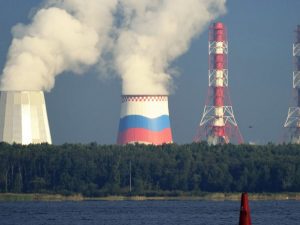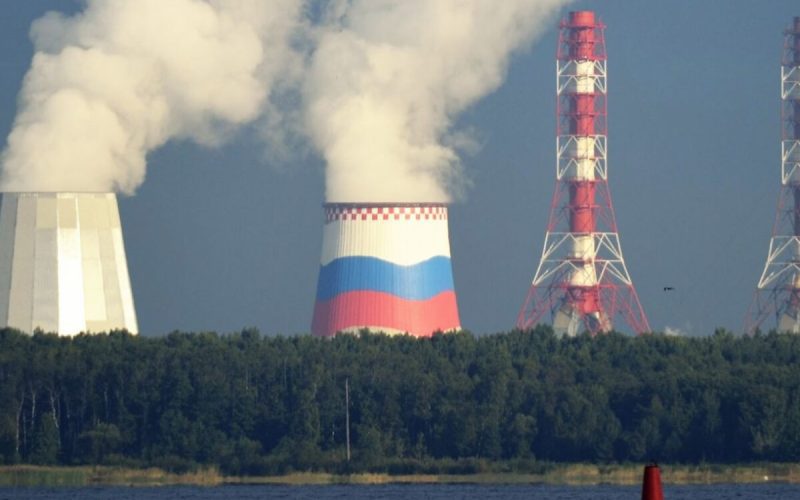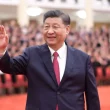In recent years, Russia has strategically leveraged its nuclear power capabilities to enhance its global influence. This move is part of a broader geopolitical strategy that combines energy dominance with military might. Russia’s nuclear initiatives are multifaceted, encompassing civilian nuclear energy projects, military advancements, and strategic partnerships. This article explores how Russia is using nuclear power to extend its influence worldwide, supported by an analysis table and a comparative table to illustrate the impact and reach of its nuclear strategy.
Russia’s Civilian Nuclear Energy Projects

Expanding Civilian Nuclear Energy Exports
Russia, through its state-owned corporation Rosatom, has become a dominant player in the global nuclear energy market. Rosatom is involved in the construction of nuclear power plants (NPPs) in numerous countries, offering attractive financing and technological expertise. These projects are not only profitable but also serve as long-term instruments of influence, binding client countries to Russia economically and politically.
Key Projects and Partnerships
Rosatom has secured contracts for the construction and operation of nuclear power plants in countries such as Turkey, Egypt, Hungary, and India. The Akkuyu Nuclear Power Plant in Turkey and the El Dabaa Nuclear Power Plant in Egypt are flagship projects that highlight Russia’s role in advancing global nuclear energy infrastructure. These projects often come with long-term fuel supply agreements and training programs for local workers, ensuring a prolonged Russian presence in these regions.
Financial and Strategic Benefits
The financing models offered by Rosatom, including build-own-operate (BOO) arrangements, make it easier for countries to adopt nuclear energy. This financial assistance, coupled with the technological transfer, positions Russia as an indispensable partner. Such dependencies can translate into geopolitical leverage, as seen in Russia’s influence over energy policies in countries hosting its NPPs.
Military Advancements in Nuclear Technology
Modernizing the Nuclear Arsenal
On the military front, Russia has embarked on an ambitious program to modernize its nuclear arsenal. This includes the development of advanced intercontinental ballistic missiles (ICBMs), submarine-launched ballistic missiles (SLBMs), and new hypersonic weapons capable of evading existing missile defense systems. These advancements serve as a deterrent and reinforce Russia’s strategic position on the global stage.
Showcasing Military Prowess
Russia frequently showcases its nuclear capabilities through military parades, drills, and strategic military deployments. This display of power is intended to send a clear message to both allies and adversaries about Russia’s military might. The strategic use of nuclear weapons as a tool of coercion is evident in Russia’s foreign policy, particularly in its relations with NATO and neighboring countries.
Strategic Partnerships and Alliances
Building Alliances through Nuclear Cooperation
Russia’s nuclear strategy extends beyond mere economic transactions; it also involves building strategic alliances. By engaging in nuclear cooperation agreements, Russia fosters closer ties with countries across Asia, Africa, and Latin America. These alliances are strengthened through joint ventures, scientific collaborations, and military cooperation.
Influence in International Organizations
Russia’s involvement in international nuclear organizations, such as the International Atomic Energy Agency (IAEA), allows it to shape global nuclear policies. By participating in these forums, Russia not only promotes its technological standards but also gains a platform to advocate for its geopolitical interests.
Economic and Political Leverage
Energy Dependency as a Tool of Influence
Countries that rely on Russian nuclear technology and fuel supplies often find themselves in a position of dependency. This dependency can be leveraged by Russia to influence political decisions, energy policies, and even security arrangements. The case of Hungary’s Paks II nuclear power plant illustrates how energy dependency translates into political alignment with Russia.
Economic Benefits and Soft Power
The economic benefits derived from exporting nuclear technology bolster Russia’s economy and fund further advancements in the nuclear sector. Additionally, these exports enhance Russia’s soft power by projecting an image of technological prowess and reliability. This soft power is crucial in gaining the trust and cooperation of other nations.
Challenges and Criticisms
Environmental and Safety Concerns
Despite the strategic advantages, Russia’s nuclear projects often face criticism due to environmental and safety concerns. Incidents like the Chernobyl disaster have left a lasting impact on public perception, and any mishap in Russian-built NPPs could undermine its global influence. Addressing these concerns is essential for Russia to maintain its credibility.
Geopolitical Tensions
Russia’s aggressive nuclear strategy can exacerbate geopolitical tensions, particularly with NATO and the United States. The modernization of its nuclear arsenal and the potential deployment of new weapons systems are viewed as threats, prompting countermeasures and leading to an arms race. This dynamic creates an unstable security environment that could backfire on Russia’s aspirations.
Analysis Table: Key Aspects of Russia’s Nuclear Strategy
| Aspect | Details | Impact on Global Influence |
|---|---|---|
| Civilian Nuclear Projects | Construction and operation of NPPs worldwide | Long-term economic and political ties with host countries |
| Military Advancements | Modernization of nuclear arsenal and development of new weapons | Enhanced military deterrence and strategic leverage |
| Strategic Partnerships | Alliances through nuclear cooperation and joint ventures | Strengthened geopolitical alliances |
| Economic Leverage | Energy dependency of client countries | Increased influence over energy policies and political decisions |
| Soft Power | Technological prowess and reliability | Improved international image and trust |
| Environmental Concerns | Safety and ecological risks associated with nuclear projects | Potential damage to credibility and influence |
| Geopolitical Tensions | Arms race and countermeasures by other powers | Increased global security instability |
Comparative Table: Russia vs. Other Nuclear Powers
| Criteria | Russia | United States | China |
|---|---|---|---|
| Civilian Nuclear Exports | Extensive, Rosatom-led projects | Limited, primarily domestic focus | Expanding, focus on Belt and Road countries |
| Military Nuclear Arsenal | Modernizing, hypersonic weapons | Largest, advanced delivery systems | Growing, emphasis on modernization |
| Strategic Partnerships | Strong ties with Asia, Africa, Latin America | NATO allies, strategic partnerships | Strong regional influence, strategic economic alliances |
| Economic Leverage | High, through energy dependency | Moderate, diverse energy exports | High, through economic investments |
| Soft Power | Technological expertise, reliability | Advanced technology, innovation leader | Rapid technological growth |
| Environmental Concerns | Historical incidents (Chernobyl) | Strict safety regulations | Rapid expansion, safety concerns |
| Geopolitical Tensions | High, with NATO and US | High, with Russia and China | Moderate, rising tensions with US |
Conclusion
Russia’s strategic use of nuclear power is a multifaceted approach that combines civilian energy projects, military advancements, and strategic alliances to enhance its global influence. While this strategy offers significant economic and political benefits, it also poses challenges and risks. Balancing these factors is crucial for Russia to sustain its influence without triggering adverse geopolitical consequences.











